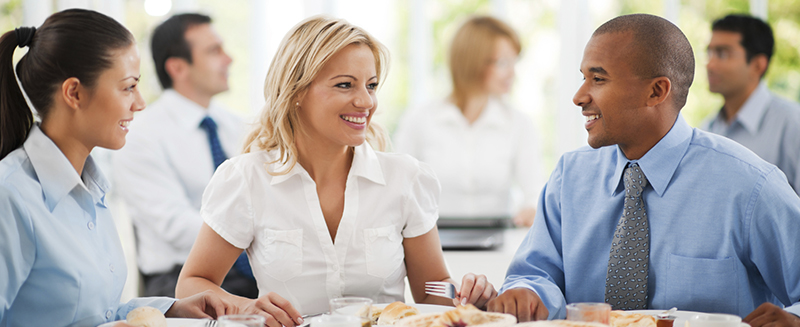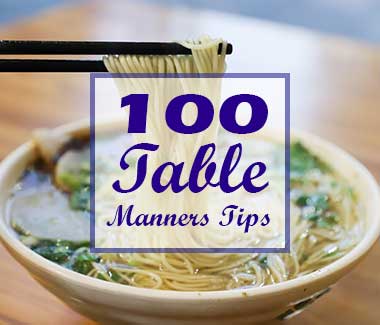
Business Meal Etiquette
Planning and Arriving
Planning the Business Lunch
The following dining etiquette tips will make preparing to host a business lunch a fairly simple endeavor.
If possible, find out whether your guest(s) likes or dislikes certain cuisine. Ask when extending the invitation or call an assistant to get the answer. You could also give your guest a choice of two or three restaurants. If hosting a group, choose a restaurant with a diverse menu.
Invite well in advance. You or your assistant should arrange any business meal at least a week in advance.
Choose a restaurant you know. If possible, pick one restaurant and frequent it. This will pay special rewards in terms of your being recognized when you walk in, and it will probably result in better service. You will have to cultivate (and tip) the headwaiter to make yourself known. Also keep in mind that if anyone is going to travel fairly far to reach the restaurant, it should be you and not your guest.
Local custom will generally dictate the time of the lunch. In large cities, lunches might be planned at 1 P.M.; in small communities, 12 noon might be more common.
Make it clear that you are the host.
Tell your guest what to expect to allow your guest to prepare and bring any pertinent materials.
Confirm the time and place and repeat the details of the invitation later in the conversation.
Reserve a table ahead of time. If you have a preference for seating (a spot that's quiet) tell the person taking the reservation.
Reconfirm with your guest. Call on the morning of a lunch or dinner; if you've scheduled breakfast, call the day before.
Business Invitation Etiquette
Business Meal Etiquette - Arriving
Good dining etiquette and the impression you make on your business lunch companions starts when you first arrive at the restaurant.
Don't be late. It's appropriate that this is the first rule of dining etiquette. Arriving even five or ten minutes late leaves a bad impression; any later than that sends a clear message of carelessness and thoughtlessness.
Dress appropriately. Error on the side of dressing up. Call the restaurant to see if they have a dress code.
When you arrive at the restaurant and your host hasn't arrived, etiquette dictates that you wait in the lobby or waiting area for him or her. Don't go to the table and wait there.
If you are the host, wait for your guest in the lobby. If some of your guests have already arrived, you should wait in the lobby only until the time the reservation is made for. Then proceed to the table and have the maitre d' or waiter escort the late guests in.
Table Manners
Paying the Bill
The person who does the inviting does the paying. If someone invites you to lunch and the server places the check on the table, don't make a grab for it. Let the person who invited you have the opportunity to pick up the check and deal with it.
If the server gives the check to your guest ask them for the check. A simple way to prevent this from happening, is to let the server or maitre d' know in advance that the check should be brought to you.
Tipping
Whoever is paying the bill should make sure a gratuity hasn't already been included in the total--something that is standard procedure at some restaurants. Other restaurants may include an automatic gratuity only for large groups. On many occasions, you’ll be tipping not only the waiter but other restaurant staff as well. Tip according to these general guidelines.
The Waiter or Waitress
Twenty percent of the total bill before tax is added.
The Sommelier or Wine Steward
Either 15 to 20 percent of the cost of the bottle or a $3 to $5 per bottle. If you tip a sommelier, remember to deduct the cost of the wine from the bill before figuring the tip for the wait staff.
The Bartender
15 to 20 percent of the tab, with a minimum of $1.00 to $2.00 per drink.
The Coat room Attendant
$2 for the first coat and $1 per additional coat.
The Parking Valet or Garage Attendant
$2 to $5 - tip when the car is returned to you.


